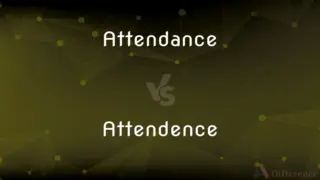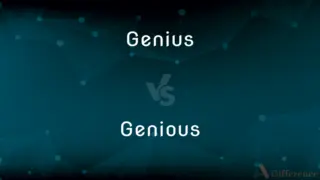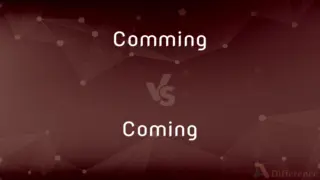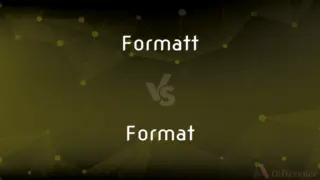Drawed vs. Drew — Which is Correct Spelling?
Edited by Tayyaba Rehman — By Fiza Rafique — Updated on March 22, 2024
Drawed is an incorrect spelling; the correct past tense of "draw" is Drew. Drew refers to the past action of making a picture or pulling something.

Table of Contents
Which is correct: Drawed or Drew
How to spell Drew?
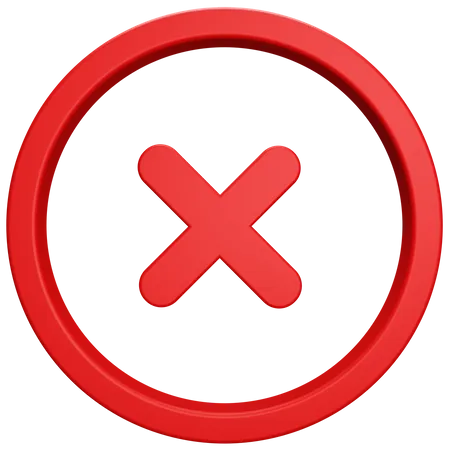
Drawed
Incorrect Spelling

Drew
Correct Spelling
ADVERTISEMENT
Key Differences
Associate "drew" with past actions: "Yesterday, I drew a picture."
Think of the rhyme: "Just like 'knew' is from 'know,' 'drew' is from 'draw.'"
Think of similar irregular verbs: "fly" becomes "flew" and "draw" becomes "drew."
Note the pattern: "draw," "drawing," "drew," "drawn."
Remember, "drawed" sounds awkward; "drew" flows better.
ADVERTISEMENT
How Do You Spell Drew Correctly?
Incorrect: The team drawed up a new strategy.
Correct: The team drew up a new strategy.
Incorrect: He drawed a picture of his house.
Correct: He drew a picture of his house.
Incorrect: She drawed a circle on the board.
Correct: She drew a circle on the board.
Incorrect: I drawed a bath for relaxing after work.
Correct: I drew a bath for relaxing after work.
Drew Definitions
Drew can mean to pull or drag something.
He drew his chair closer to the desk.
Drew may refer to extracting something, as in water from a well.
She drew water from the well.
Drew is the past tense of "draw," meaning to produce a picture with pencil or pen.
She drew a beautiful landscape.
Drew can signify approaching or coming to a particular point in time.
As the evening drew near, the party began.
Drew might indicate obtaining a response or eliciting a reaction.
His speech drew applause from the audience.
Past tense of draw.
Past participle of draw
Of Draw.
United States actor (born in Ireland); father of Georgiana Emma Barrymore (1827-1862)
Drew Meaning in a Sentence
Yesterday, I drew a portrait of my dog.
He drew his sword in defense of the villagers.
They drew lots to decide who would go first.
The artist drew inspiration from the beautiful landscape.
She drew a map to guide us to the treasure.
The lawyer drew up a contract for the agreement.
The child drew a picture for her mother.
She drew a comparison between the two novels.
I drew a deep breath before diving into the pool.
I drew a conclusion from the evidence presented.
The movie drew tears from the audience.
She drew a heart on the foggy window.
He drew a line in the sand, setting a clear boundary.
The play drew critical acclaim for its performances.
The game drew a large crowd of spectators.
They drew closer to the fire to keep warm.
The teacher drew the student's attention to the board.
The country drew on its reserves during the crisis.
The company drew up plans for a new product.
He drew back the curtain to let in the light.
The magician drew a rabbit from his hat.
The festival drew participants from all over the world.
He drew his chair closer to the table.
The meeting drew to a close after two hours.
The discussion drew out differing opinions from the group.
Common Curiosities
What is the root word of Drew?
The root word is "draw."
Which conjunction is used with Drew?
Any conjunction can be used, e.g., "and" in "She drew and painted."
Why is it called Drew?
It's the irregular past tense form of the verb "draw."
Which vowel is used before Drew?
"A" as in "a drew."
Which preposition is used with Drew?
"From" as in "drew from the well."
Is Drew a negative or positive word?
Neutral, but context can provide positive or negative connotations.
What is the pronunciation of Drew?
It's pronounced as /druː/.
What is the plural form of Drew?
Drew doesn't have a plural form since it's a verb in the past tense.
What is the verb form of Drew?
"Drew" is the past tense of the verb "draw."
Is Drew a noun or adjective?
Drew is primarily a verb.
Is Drew an abstract noun?
No, it's a verb.
Is the Drew term a metaphor?
It can be used metaphorically, e.g., "drew inspiration."
What part of speech is Drew?
It's a verb.
What is the opposite of Drew?
For the drawing context, "erased." For pulling, "pushed."
What is the singular form of Drew?
Drew is already in singular form.
Is Drew a vowel or consonant?
Drew is a word containing both vowels and consonants.
Is Drew a countable noun?
Drew is primarily a verb, not a noun.
How many syllables are in Drew?
One syllable.
How do we divide Drew into syllables?
Drew is one syllable and isn't divided.
Which determiner is used with Drew?
Determiners like "this" or "that" can be used based on context.
What is another term for Drew?
Sketched or illustrated (in the context of drawing).
Which article is used with Drew?
"A" or "an" can be used depending on the context.
Is Drew an adverb?
No, it's not an adverb.
Is Drew a collective noun?
No, it's not a collective noun.
What is the third form of Drew?
Drawn.
How is Drew used in a sentence?
"Yesterday, I drew a portrait of my friend."
Is the word Drew imperative?
No, it's not imperative.
Is the word Drew a gerund?
No, the gerund form is "drawing."
Is the word “Drew” a Direct object or an Indirect object?
"Drew" is primarily a verb and would not typically function as an object.
What is a stressed syllable in Drew?
The whole word "drew" is stressed as it's one syllable.
What is the first form of Drew?
Draw.
What is the second form of Drew?
Drew.
Share Your Discovery

Previous Comparison
Genius vs. Ingenius
Next Comparison
Inobservant vs. UnobservantAuthor Spotlight
Written by
Fiza RafiqueFiza Rafique is a skilled content writer at AskDifference.com, where she meticulously refines and enhances written pieces. Drawing from her vast editorial expertise, Fiza ensures clarity, accuracy, and precision in every article. Passionate about language, she continually seeks to elevate the quality of content for readers worldwide.
Edited by
Tayyaba RehmanTayyaba Rehman is a distinguished writer, currently serving as a primary contributor to askdifference.com. As a researcher in semantics and etymology, Tayyaba's passion for the complexity of languages and their distinctions has found a perfect home on the platform. Tayyaba delves into the intricacies of language, distinguishing between commonly confused words and phrases, thereby providing clarity for readers worldwide.
















